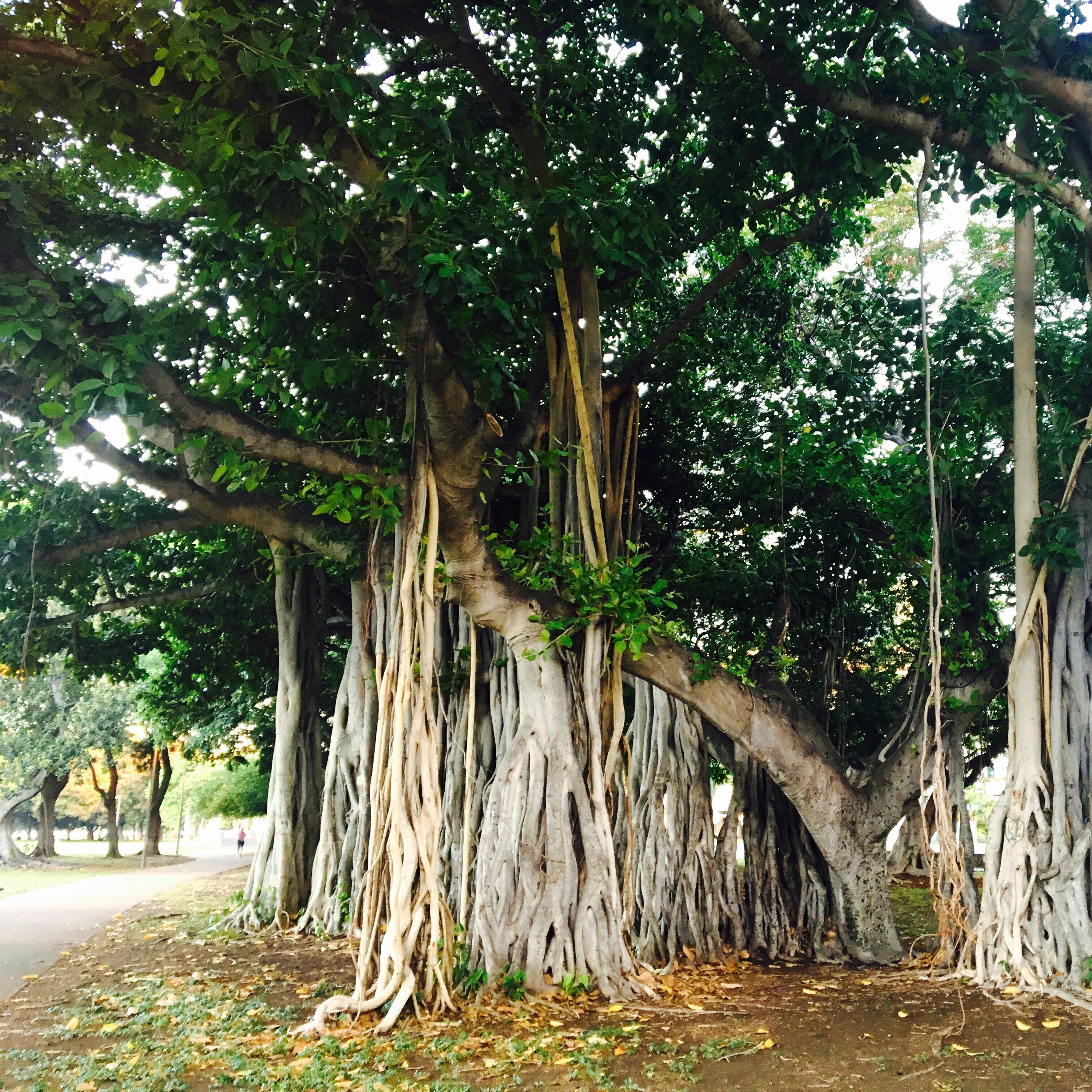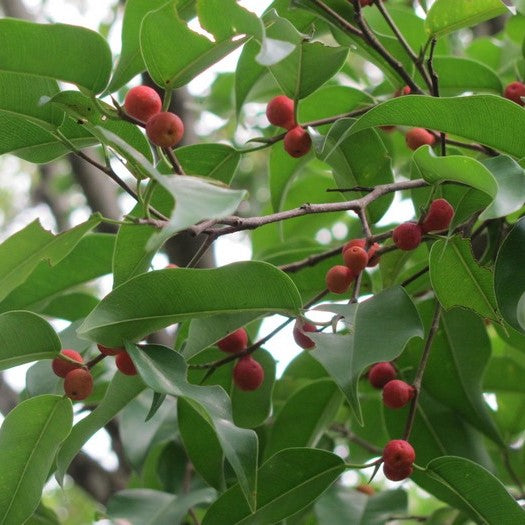Ficus Benghalensis Banyan
Family
Moraceae
Origin
India, Pakistan
Description
Ficus Benghalensis is an evergreen tree with a wide, spreading crown; it can grow 20 - 30 meters or more tall. The plant usually begins life as an epiphyte, growing in the branch of another tree; as it grows older it sends down aerial roots which, when they reach the ground quickly form roots and become much thicker and more vigorous. They supply nutrients to the fig, allowing it to grow faster than the host tree. The aerial roots gradually encircle the host tree, preventing its main trunk from expanding, whilst at the same time the foliage smothers the foliage of the host. Eventually, the host dies, leaving the fig to carry on growing without competition. It can become a very large, spreading tree in time, with some specimens several hundred meters across and producing aerial roots from the spreading branches that eventually become new trunks and allow the crown to spread even further.
Environment
Ficus Benghalensis should only be grown in full sunlight. It prefers to grow in average to moist conditions, and shouldn't be allowed to dry out. It is not particular as to soil type or ph. It is highly tolerant of urban pollution and will even thrive in inner city environments. This particular variety is an interspecific hybrid.
Landscape Uses
Traditions and beliefs, Production of shellac and for Medicinal usage.






















